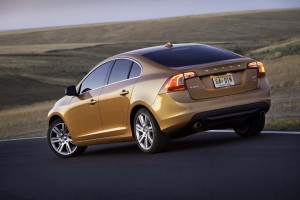
Volvo "owns" safety, says VCNA CEO Doug Speck, with technology like the new Pedestrian Protection system. But that's not good enough, he adds.
Few automotive manufacturers have a more clear-cut image than Volvo. Say, “safety,” and the brand immediately comes to mind. But in an era when most automakers promise safe products, can Volvo fight back by broadening its own brand image?
That’s what the maker is hoping to do with products like the 2011 S60, a surprisingly stylish and sporty new sedan that also will be the last model Volvo fully develops under its former owner, Ford Motor Co. Going forward, Volvo will be the Western face of new owner Zhejiang Geely, the ambitious Chinese holding company that hopes to become one of the world’s leading automotive manufacturers.
“This business is too competitive. You can’t be good at just one thing,” concedes Volvo Cars North America CEO Doug Speck. “We own safety,” he contends, “but in addition to that we’ll add cool design and fun-to-drive.”
It will take a number of years for Volvo to revise its image, Speck acknowledges, and the S60 will be the first step in that process. The sedan targets the largest segment in the luxury car market – and its absence from the maker’s line-up, over the last year, was a major reason why Volvo sales slid 12% for the calendar-year-to-date, even as the rest of the industry began a slow recovery, Speck argues.
If the VCNA executive is on target, the new S60 will generate an additional 20,000 to 25,000 sales a year for the subsidiary, handily making it the importer’s number one model. (Click Here for TheDetroitBureau.com’s review of the 2011 Volvo S60.)
Volvo certainly needs a strong seller. From a peak of 130,000 cars and crossovers, in 2004, U.S. sales slipped to just 61,433 last year. Then again, the American market could find itself slipping in significance, in the years ahead, as Volvo’s new owners put more of a focus on booming China.
“We’re going to make the investments to grow our business in China significantly and quickly,” promises Speck during a break in the media preview of the maker’s new sedan.
For one thing, expect Volvo to add new production capacity in China. The fast-growing market will likely also have a significant impact on the design of future Volvo products. The good news for VCNA, suggests Speck, is that there’s a strong similarity between what Chinese and American luxury car buyers want.
And that doesn’t include station wagons. With the recent demise of the V70 from Volvo’s North American line-up and the likely ramp-down of the V50, Speck doesn’t see any more wagons coming to the States. The emphasis will shift to crossover models like the XC70 and XC80.
And that line-up is likely to grow, he hints, with the XC designation reserved for something “below the XC60” range that is now under development.
While growth in China “will help us significantly,” Speck insists Volvo won’t ignore its traditional markets. It has 500,000 units of production capacity in Europe that it clearly wants to better utilize.
“The game is changing for all of us,” he says. “Traditionally, there’ve been two major markets: the U.S. and Europe. Now there’ll be three. But that isn’t unique to Volvo”
Until recently, Volvo was part of Ford’s once-promising Premier Automotive Group, a collection of European luxury marques that the American maker initially hoped would account for at least a third of its total profits. The last of the PAG line-up to be sold off, Volvo will be a critical part of Zhejiang Geely’s grand expansion plan. The Swedish maker will operate as an independent and equal sibling of the Geely Automotive brand, both reporting to the parent holding company. But many observers believe that Volvo will not only have to deliver the sales and profit numbers but help the smaller Chinese brand begin the process of transforming into a global manufacturer.
One area where they could wind up working together is on electrification – a strategy of critical concern to the overall Chinese auto industry. It’s an area where Volvo has lagged many of its rivals, but not for much longer, Speck promises.
A small test fleet of battery-powered C30s will begin rolling out in 2012. A more mainstream hybrid is also under development.
At the same time, “We’re working on a diesel plan for North America,” Speck reveals. “The key will be to cover our bases.”
It remains to be seen whether that strategy will work. Volvo has traditionally targeted a small and demanding niche of buyers with a very well-defined product program. It will have to reach out to an array of new buyers if it hopes to succeed going forward. But if the initial reception for the 2011 Volvo S60 is any indication, it just might be able to pull it off.

